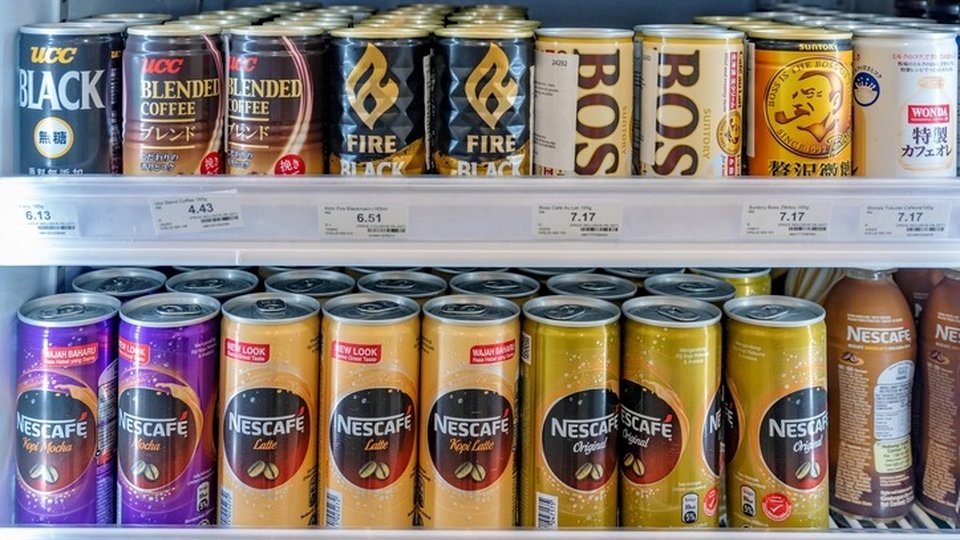Vending
Ready-to-drink coffee: Expect the surge to continue
The growth of RTD coffee is expected to continue as stressed consumers seek to consume both energy and cold beverages.

May 25, 2022 by Elliot Maras — Editor, Kiosk Marketplace & Vending Times
As the younger generation assumes a greater share of total beverage consumption, look for ready-to-drink coffee to be a winner! Not that it isn't already.
 |
| Matthew Barry |
"RTD is the leading growth segment in U.S. retail today," said Matthew Barry, senior beverages consultant at London based Euromonitor International during the recent National Coffee Association Virtual Convention.
Barry, who works out of the consultancy's Chicago office, gave an overview on RTD coffee titled, "The Future of Ready-to-Drink Coffee in the U.S."
When the pandemic came in 2020, many observers worried about a fallout in RTD coffee since the beverage is largely c-store driven, Barry noted. These fears quickly faded.
"People, when they were doing their stock piling at home, they bought ready-to-drink coffee, which shows how important this category is now," Barry said. "Overall, the category is looking very bright in the future."
Growth is expected in the mid single digits.
Trends in review
A decade ago, RTD coffee accounted for about 13% of retail coffee U.S. sales. In the spring of 2022, it reached 22%, and by 2026, Barry said it will be 25%.
RTD coffee is the most recent entry into a cold beverage trend that began in the mid 1990s with Starbucks' Frappuccino.
- Cold brew coffee came around 2015 followed by nitro coffee.
- 2017 brought a big jump to RTD coffee when Dunkin' entered it.
- In 2019, hard coffee came, driven by the 2010s' hard seltzer boom. (Other offshoots are kombucha, hard teas and hard lemonade.)
- 2020 brought a big boost in the pandemic for comforting, nostalgic beverages.
Consumers now are looking for an energy boost because they are feeling more pressure, Barry said. Forty-two percent of consumers are feeling a lot of pressure to get things done. For Boomers, one if four feel they're under constant pressure to get things done, 40% of GenXers feel so and well over half of Millennials and GenZ feel this way.
Another theory is that cold beverage trends in the coffee shop are spilling from foodservice into retail.
Starbucks, the biggest U.S. foodservice coffee player, is now primarily a provider of cold beverages, Barry said. In Q3 2021, three quarters of all Starbucks sales (not just coffee sales) were cold beverages.
"Really it's being driven by the Millennials and GenZ," Barry said.
The sugar factor
One trend possibly working against the segment Barry noted is an anti-sugar trend. A third of Americans are trying to limit their intake of refined sugars.
"This is starting to have an effect on all high sugar products," he said.
To date, Barry said, this has not affected RTD coffee or energy drinks. Many consumers are drinking more caffeine.
"They're not trying to cut their caffeine consumption in response to these problems," he said. "It's a question of needs versus wants…what they need is energy to get through their day."
"What's going on here is it's more of an occasional indulgence," he said.
RTD coffee creates subsegments
Another growth factor is that the segment spins off subsegments which keeps it exciting.
"The secret sauce behind ready-to-drink coffee is an ability to constantly create new subcategories and thus stave off maturity indefinitely."
The six RTD subcategories are: 1) Standard sweet is the largest RTD coffee subcategory, 2) The energy hybrid segment (doing well now), 3) Cold brew (still growing but showing signs of maturation), 4) Nitro (small and growing fast), 5) Hard coffee (also small) and 6) "New functional."
With all of this expansion, RTD coffee is drawing a lot of non-traditional players, such as Chobani, a yogurt maker, and Coca-Cola.
What's next?
Looking to the future, Barry said to expect more plant based RTD coffee drinks.
"As plant based sweeps through beverages overall coffee is by no means immune," he said.
Most consumption of coffee already has creamer or an additive that is often dairy based.
The future, according to Barry, will include new players, blurred categories and a growing emphasis on plant based.
Head photo: LinkedIn.
About Elliot Maras
Elliot Maras is the editor of Kiosk Marketplace and Vending Times. He brings three decades covering unattended retail and commercial foodservice.


